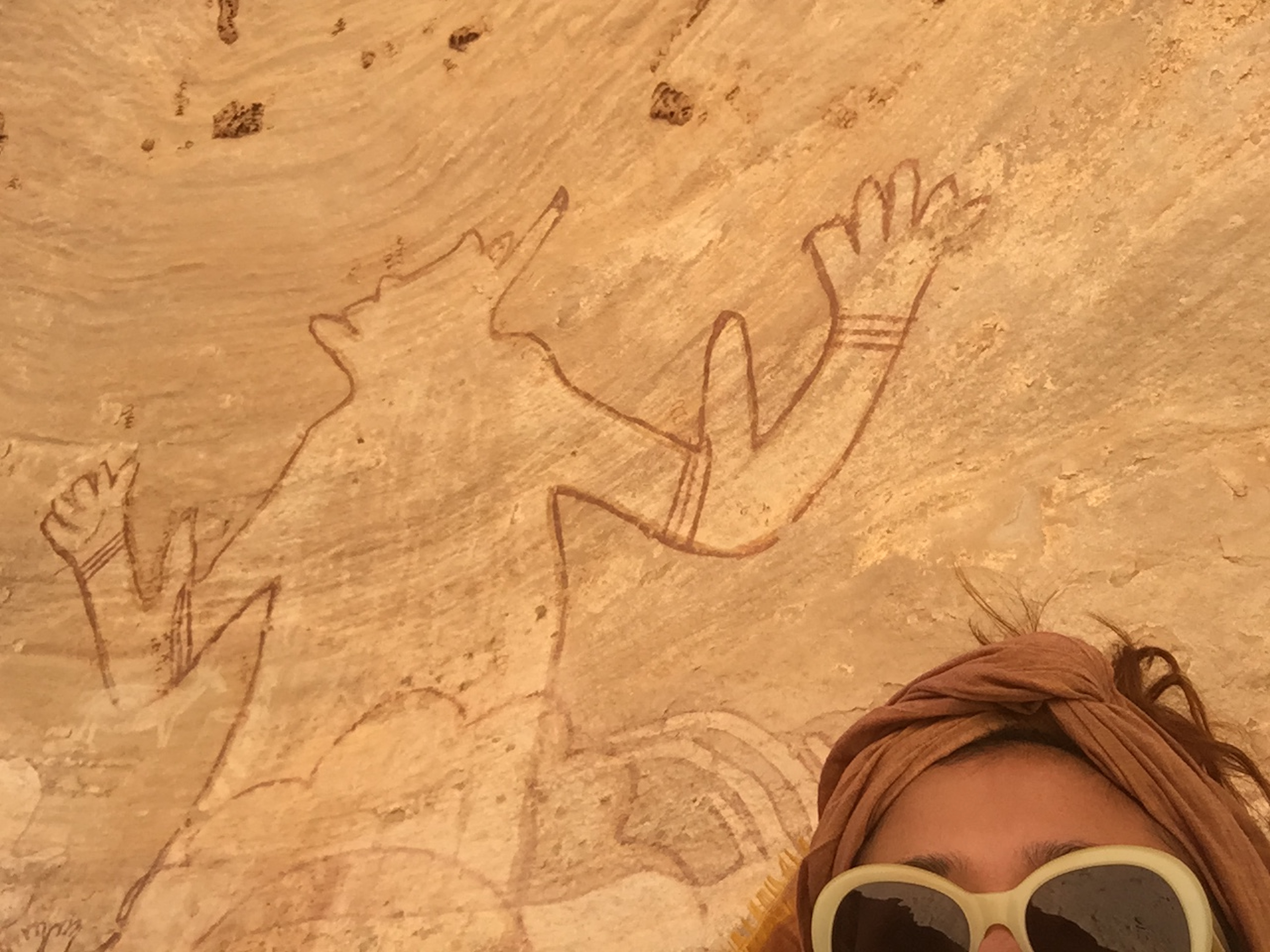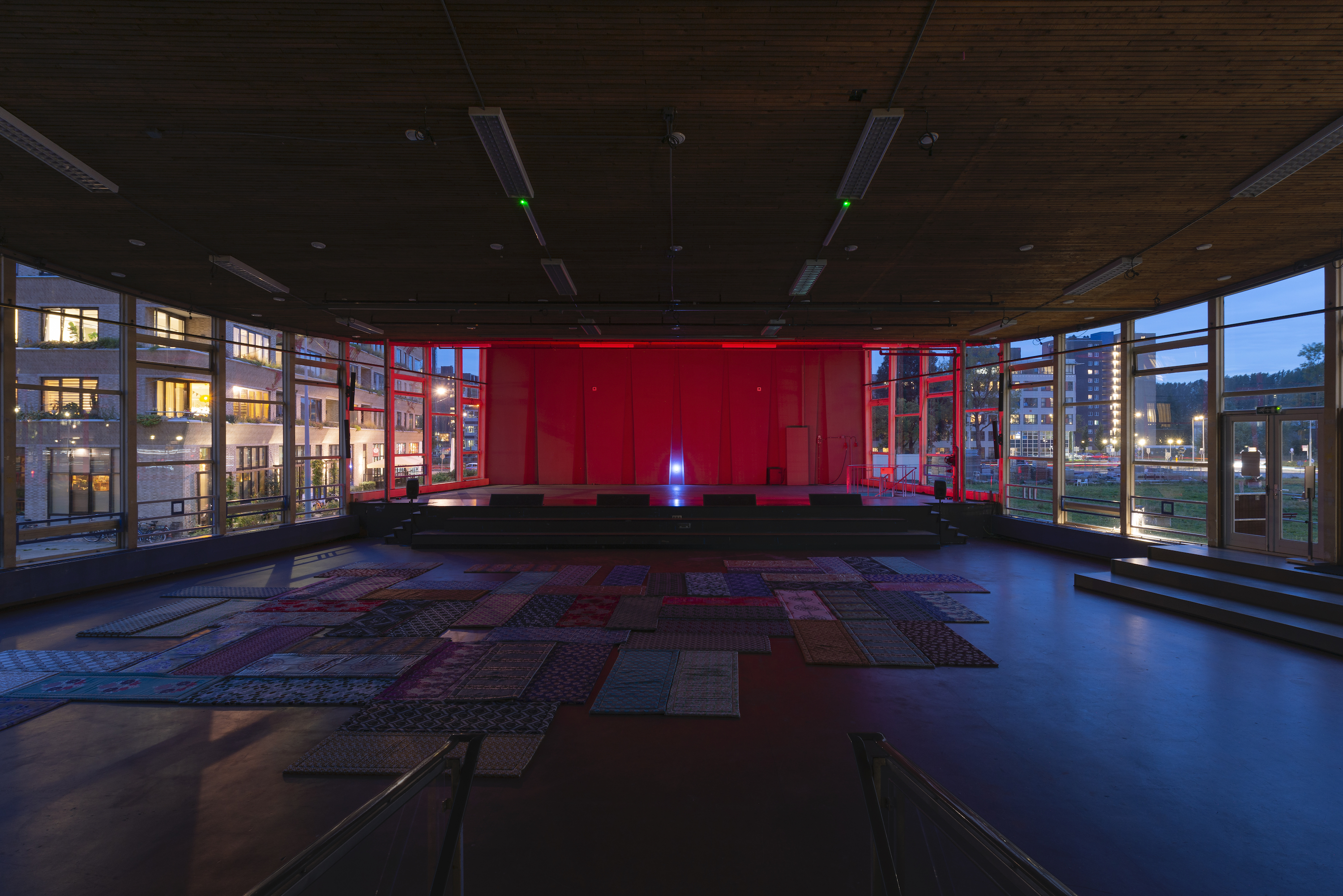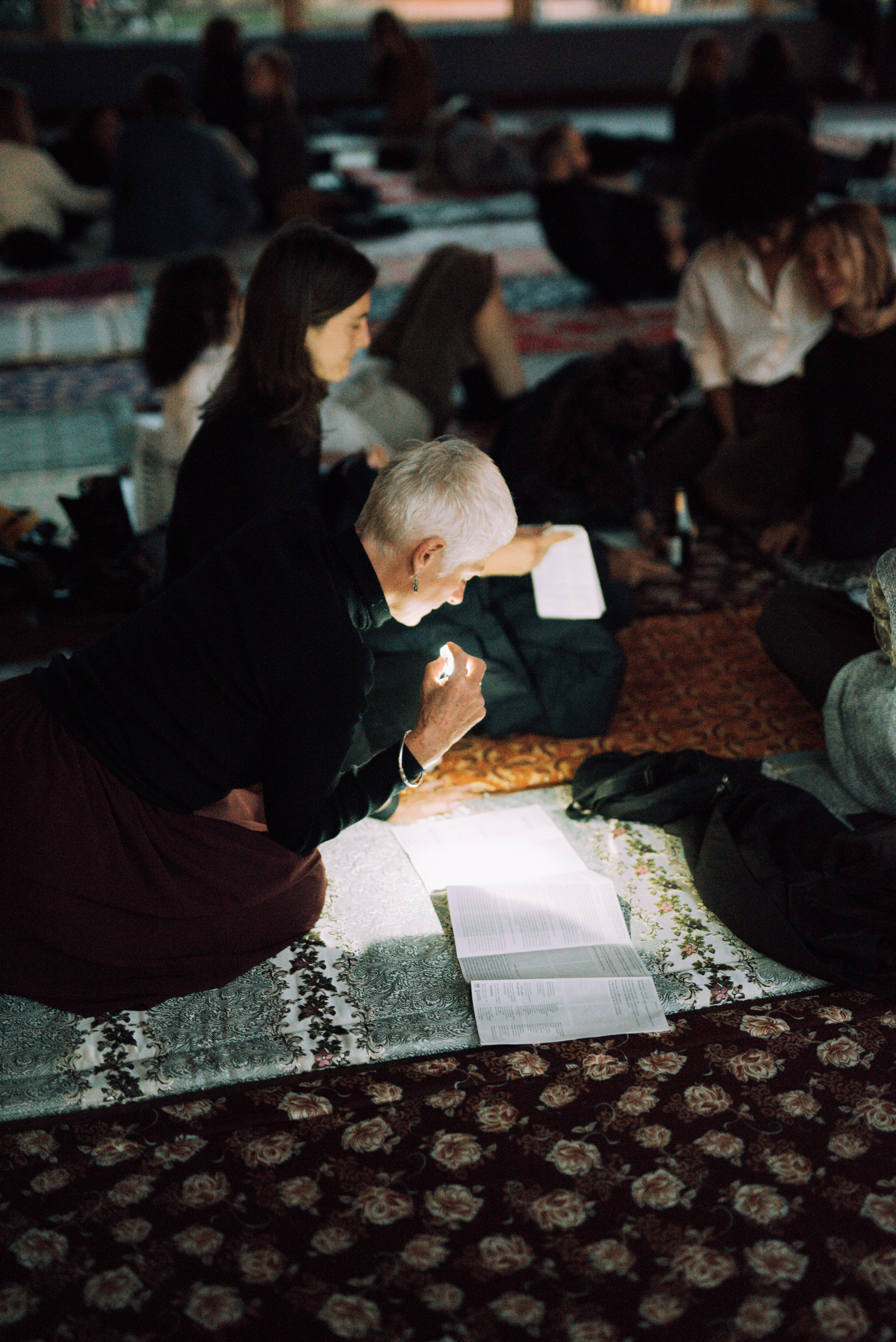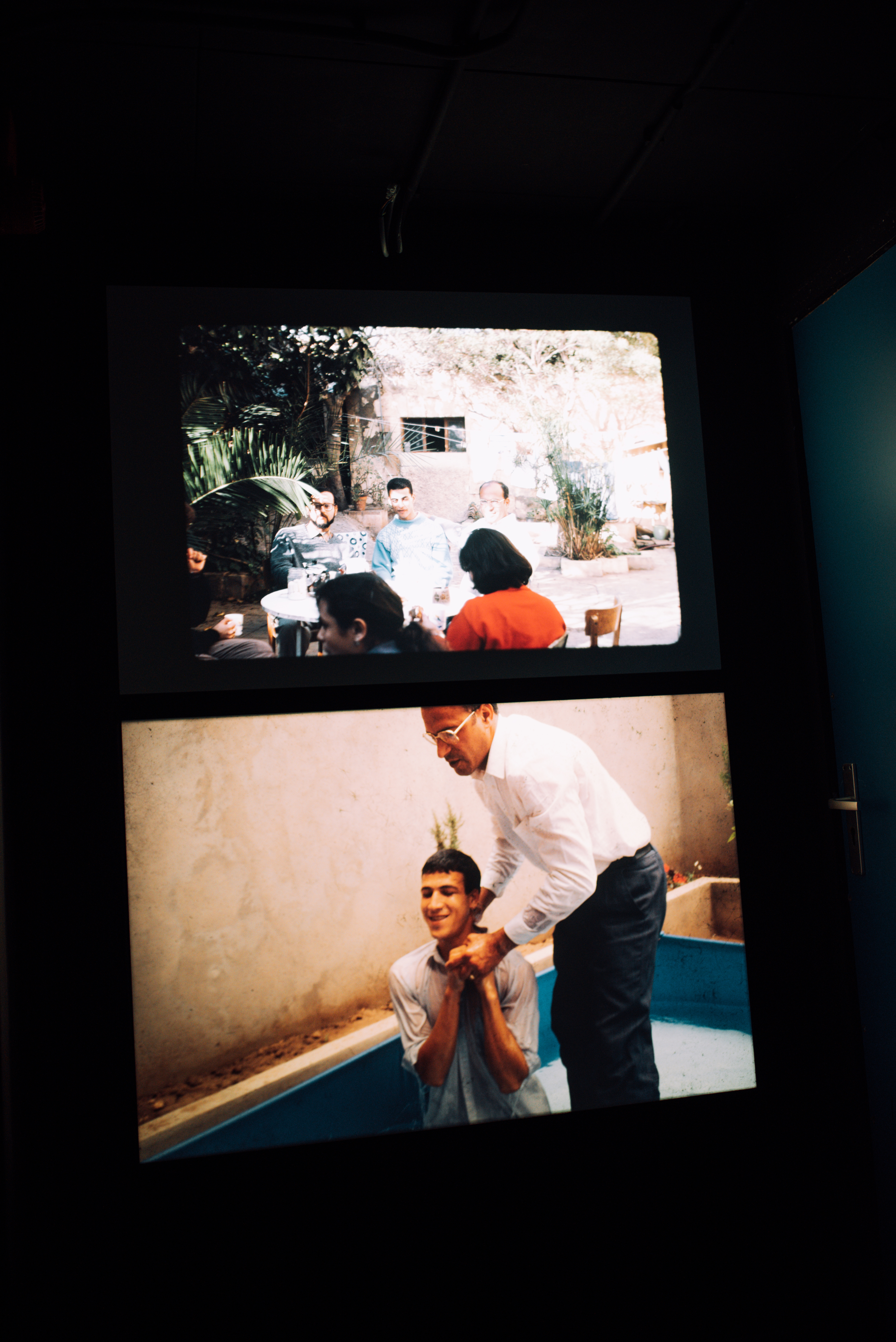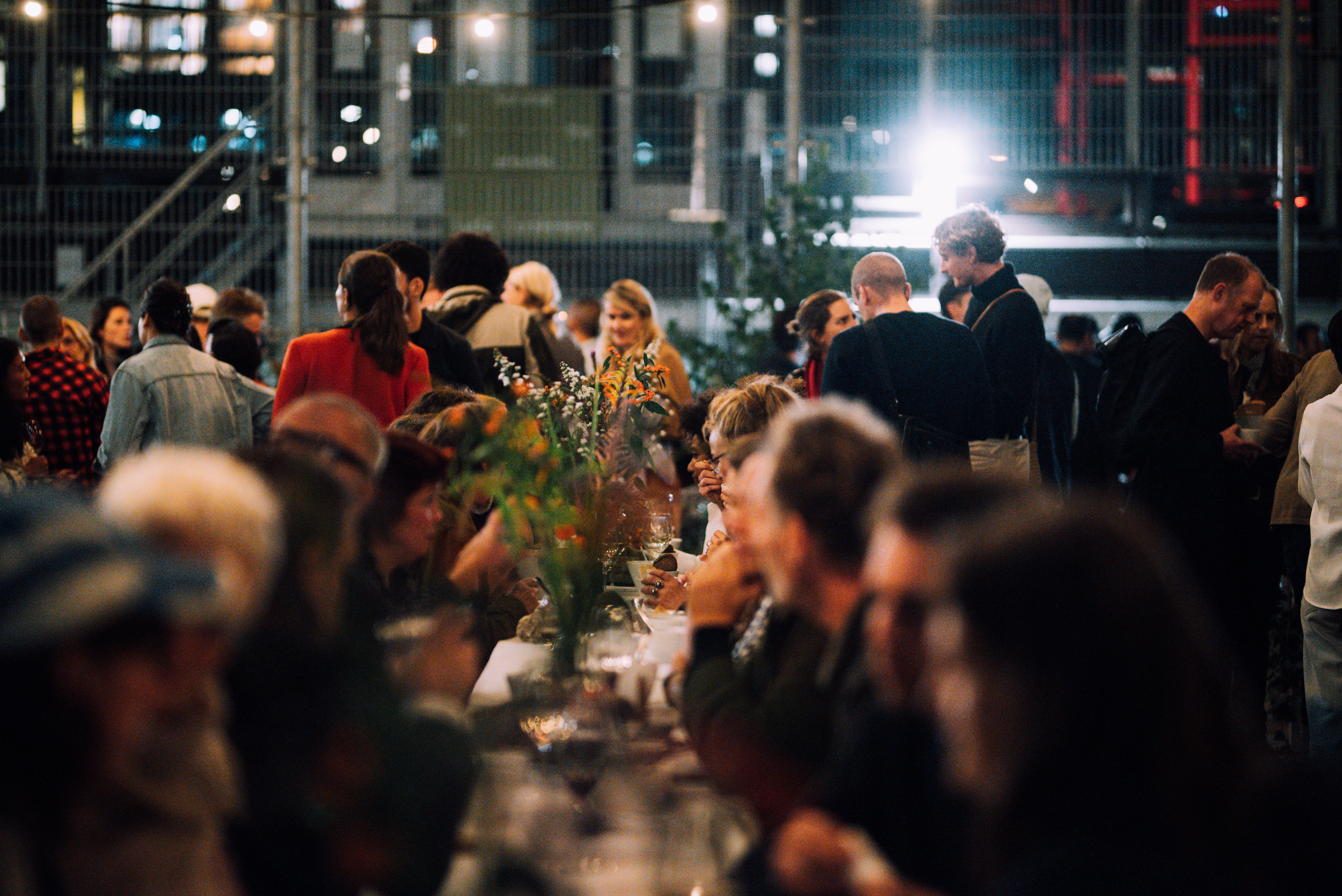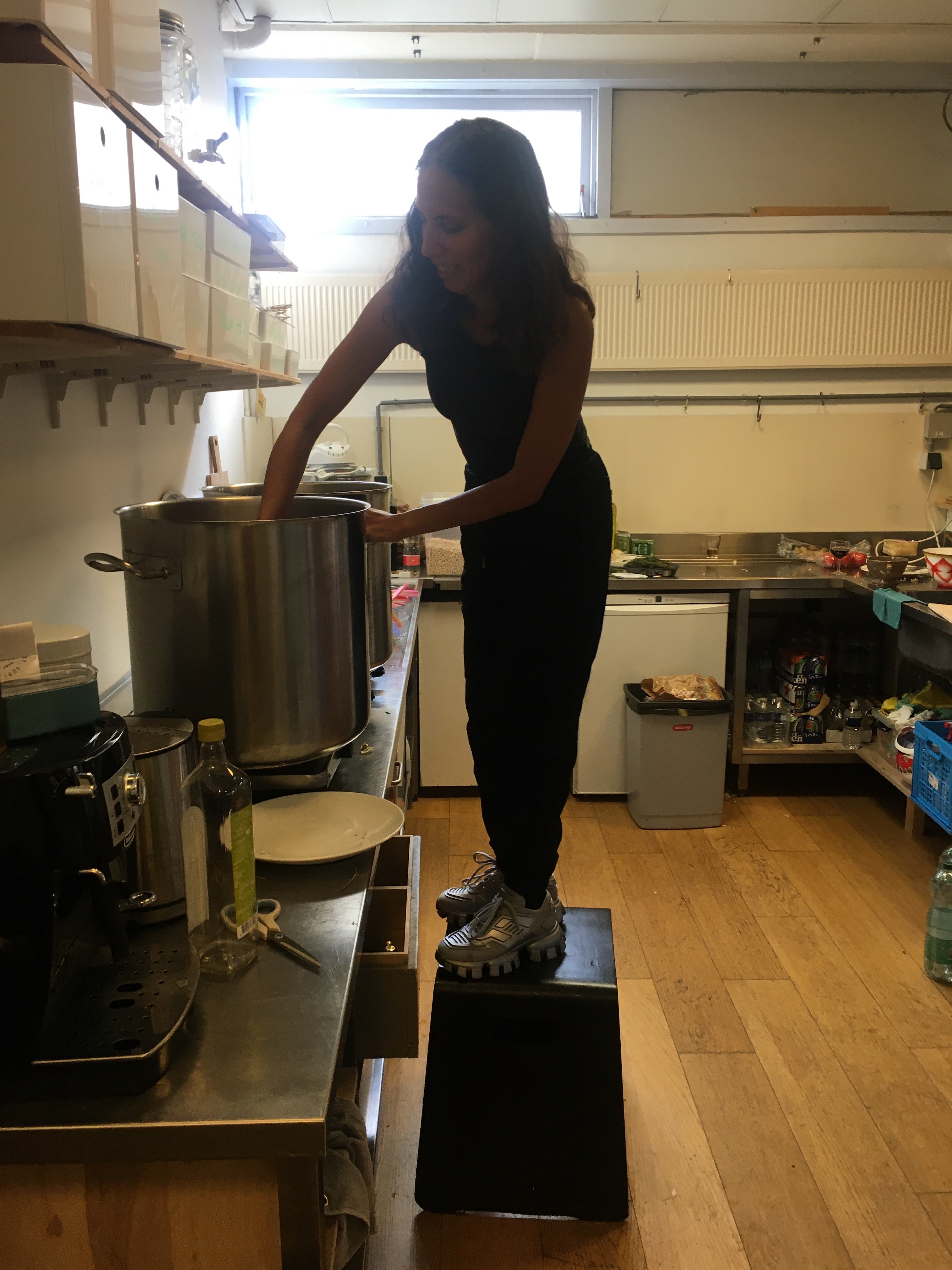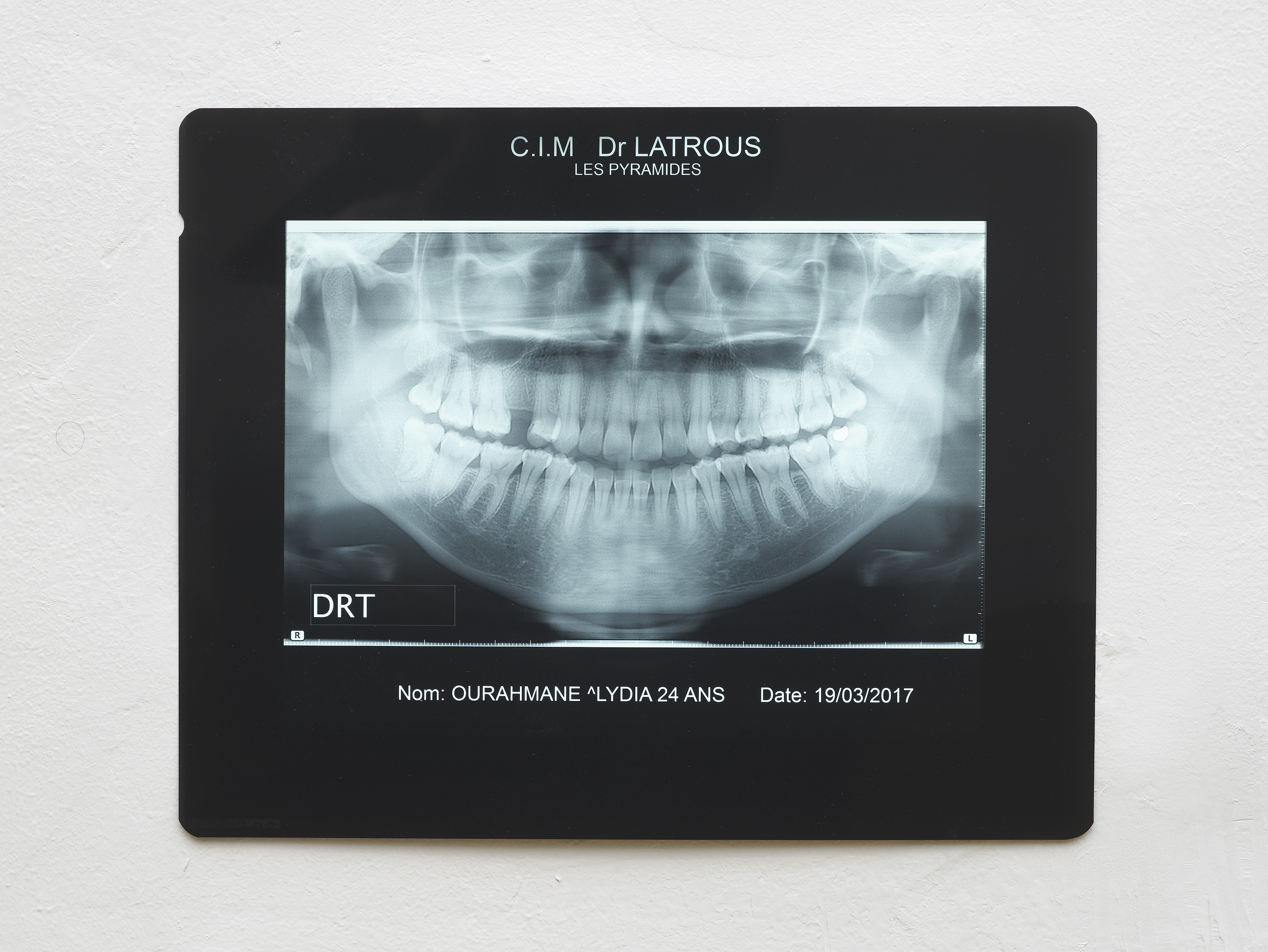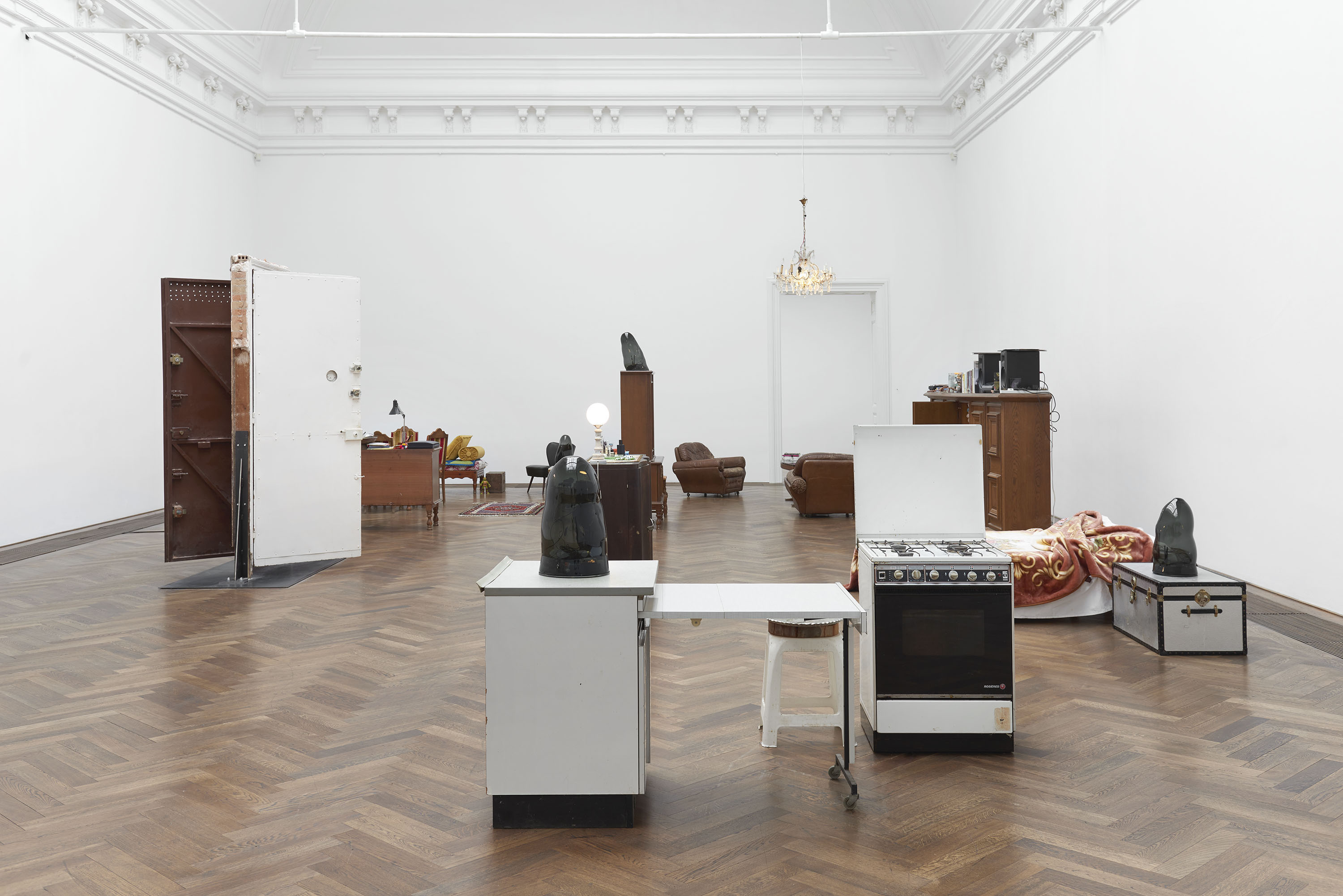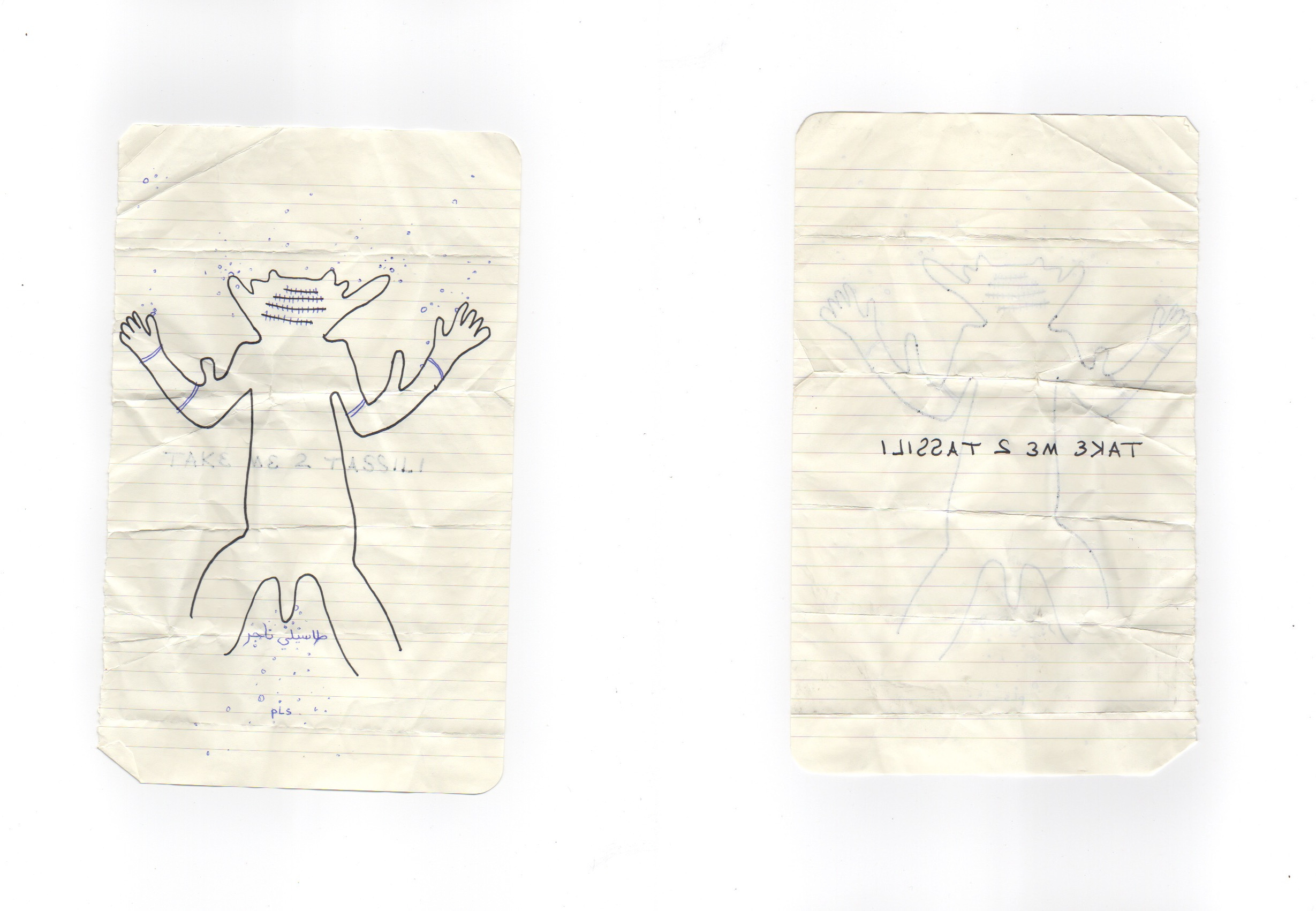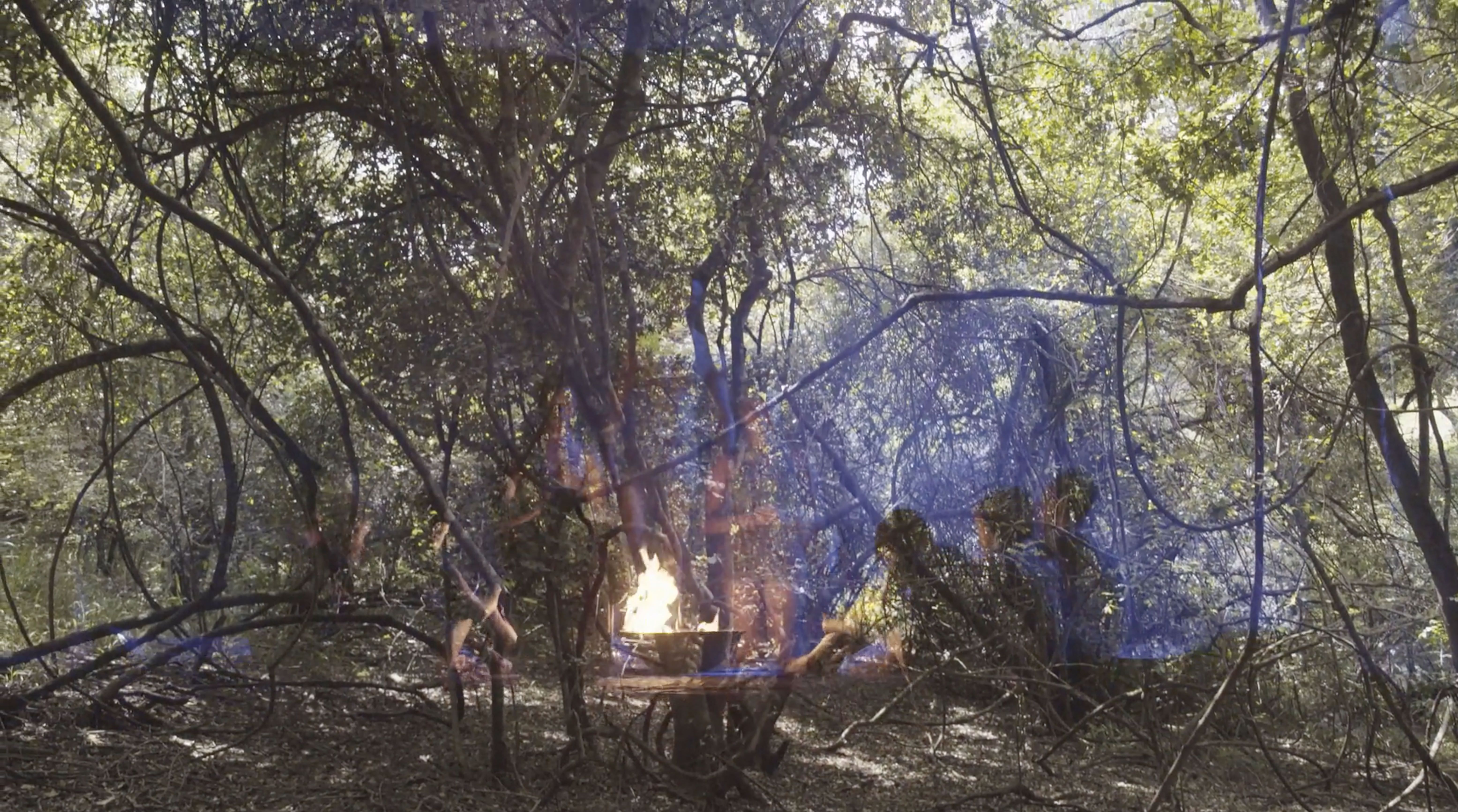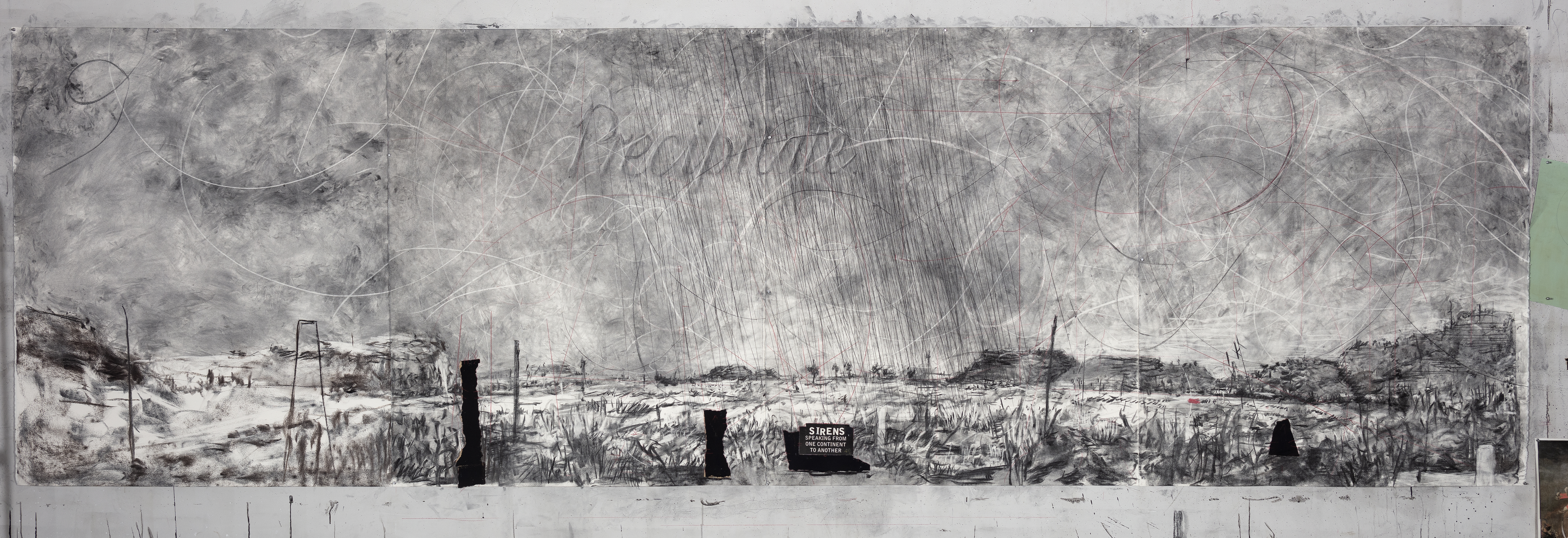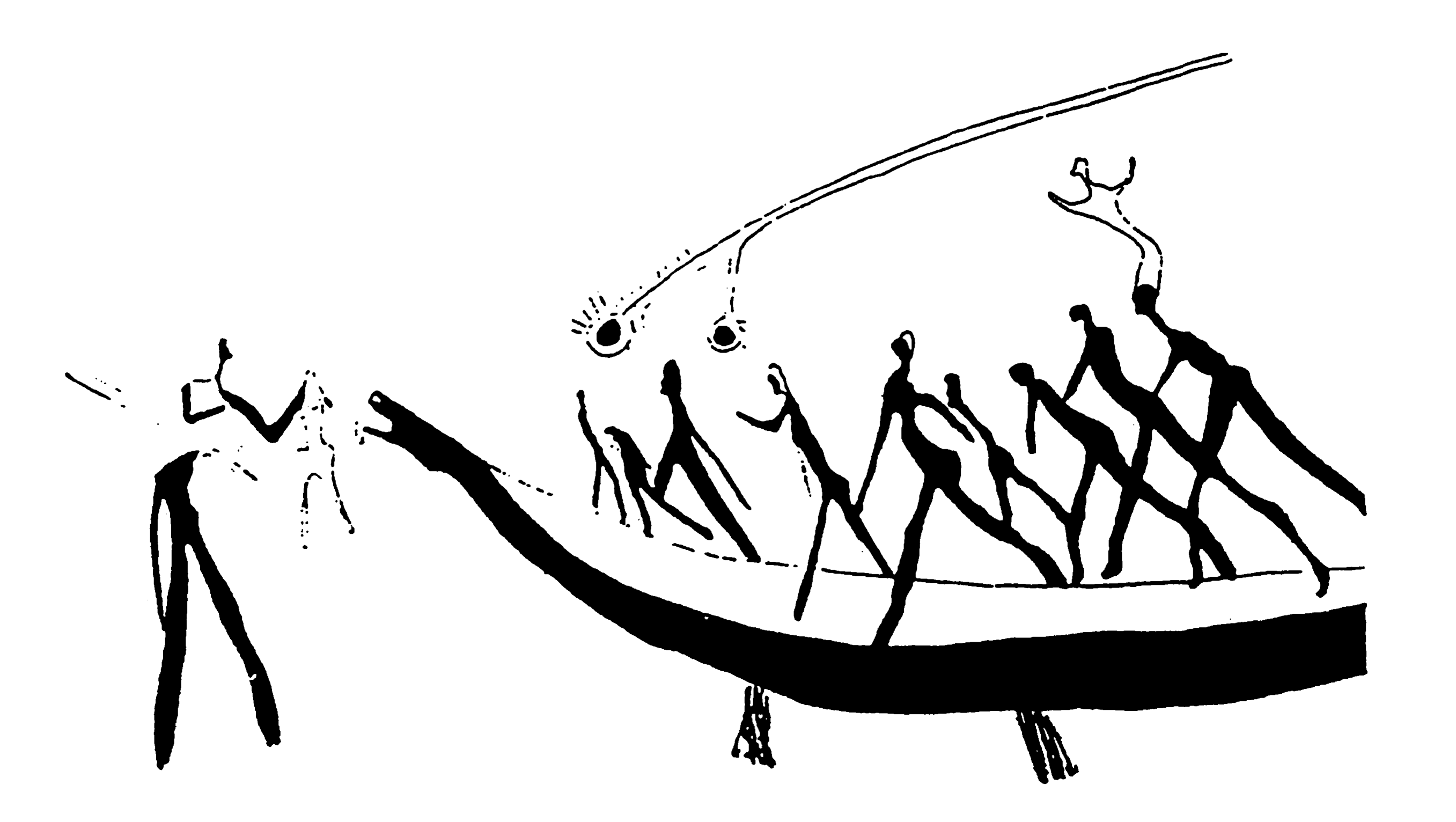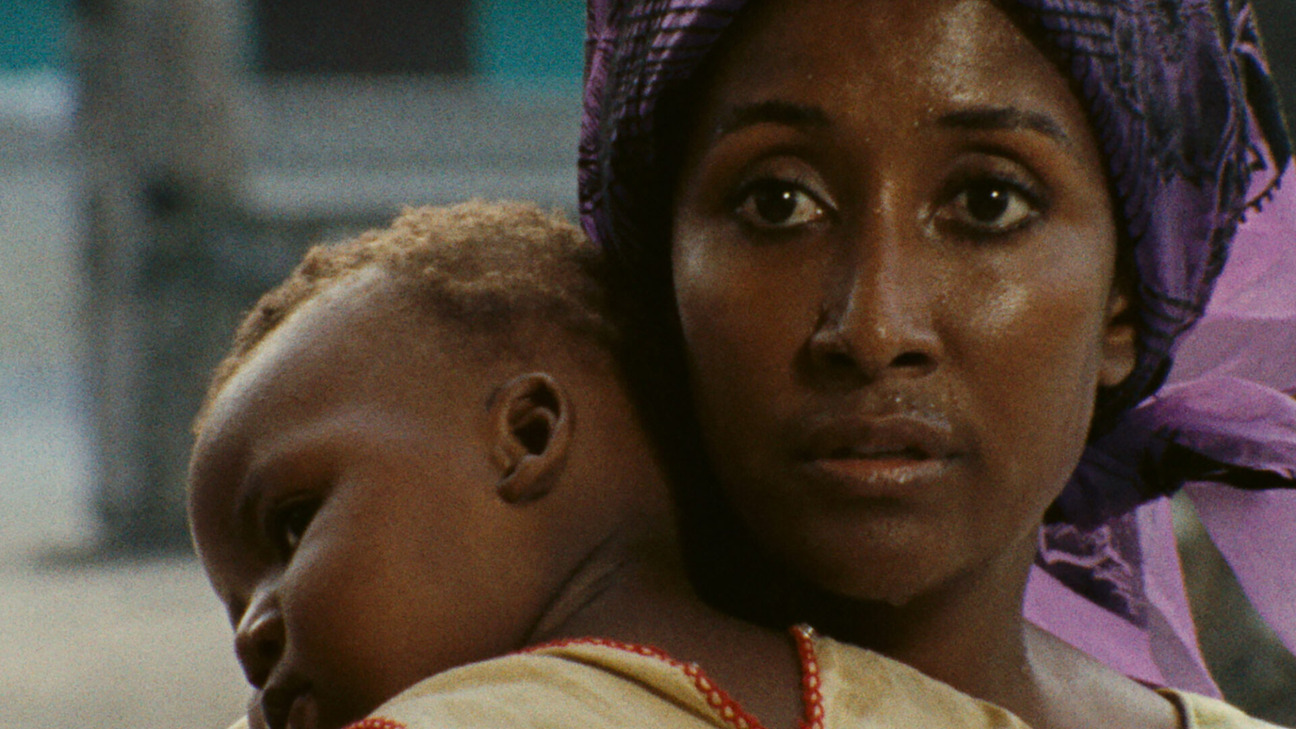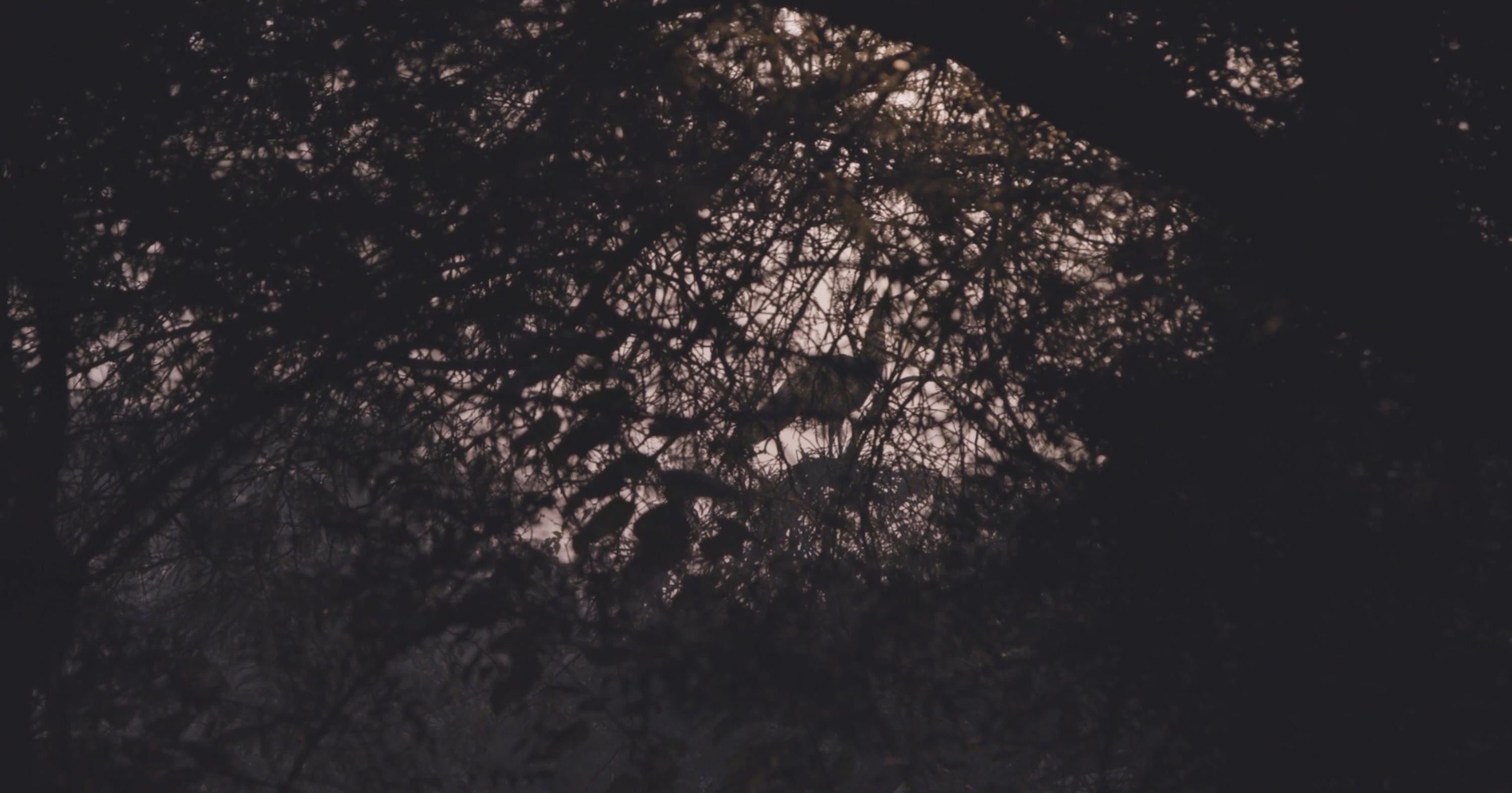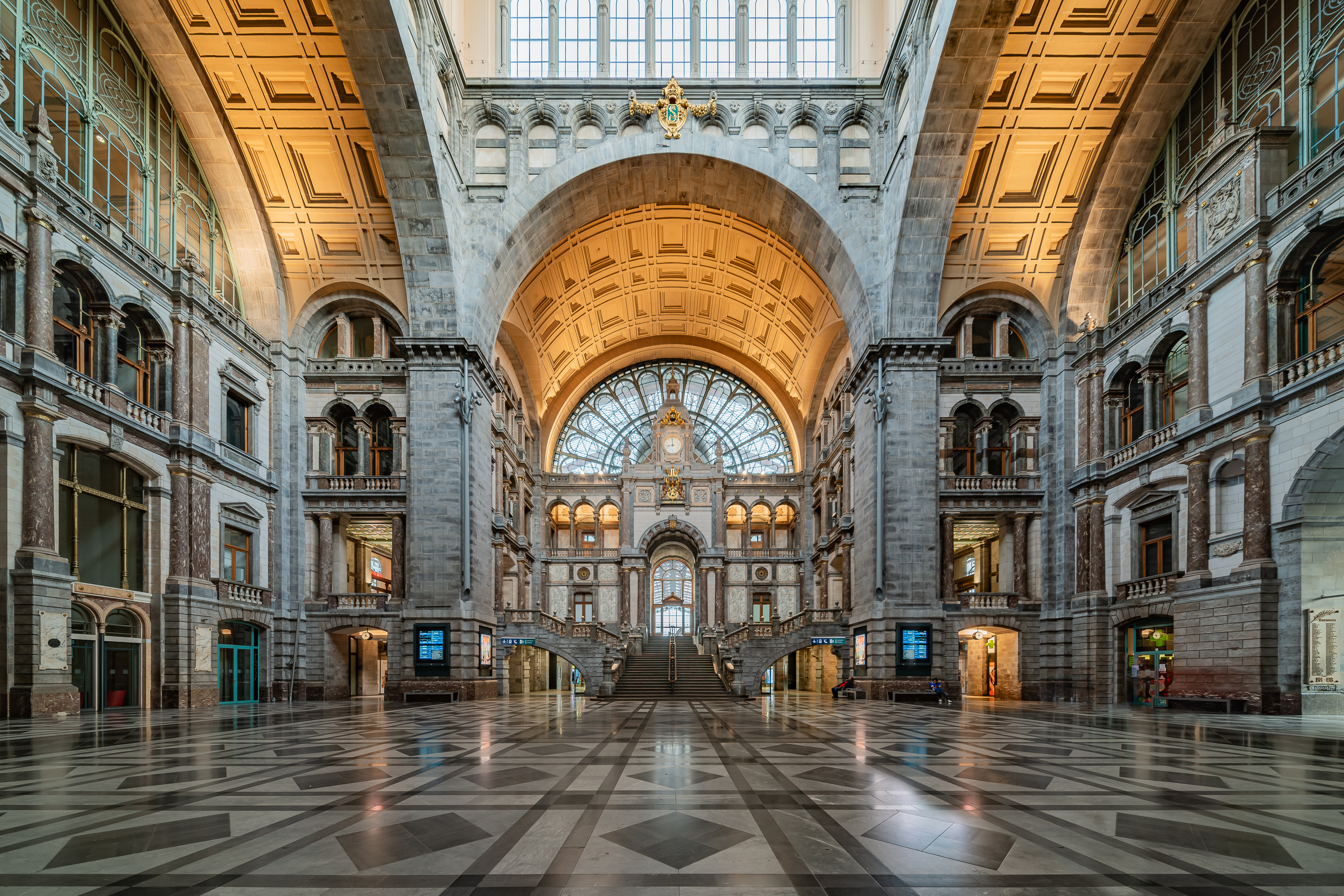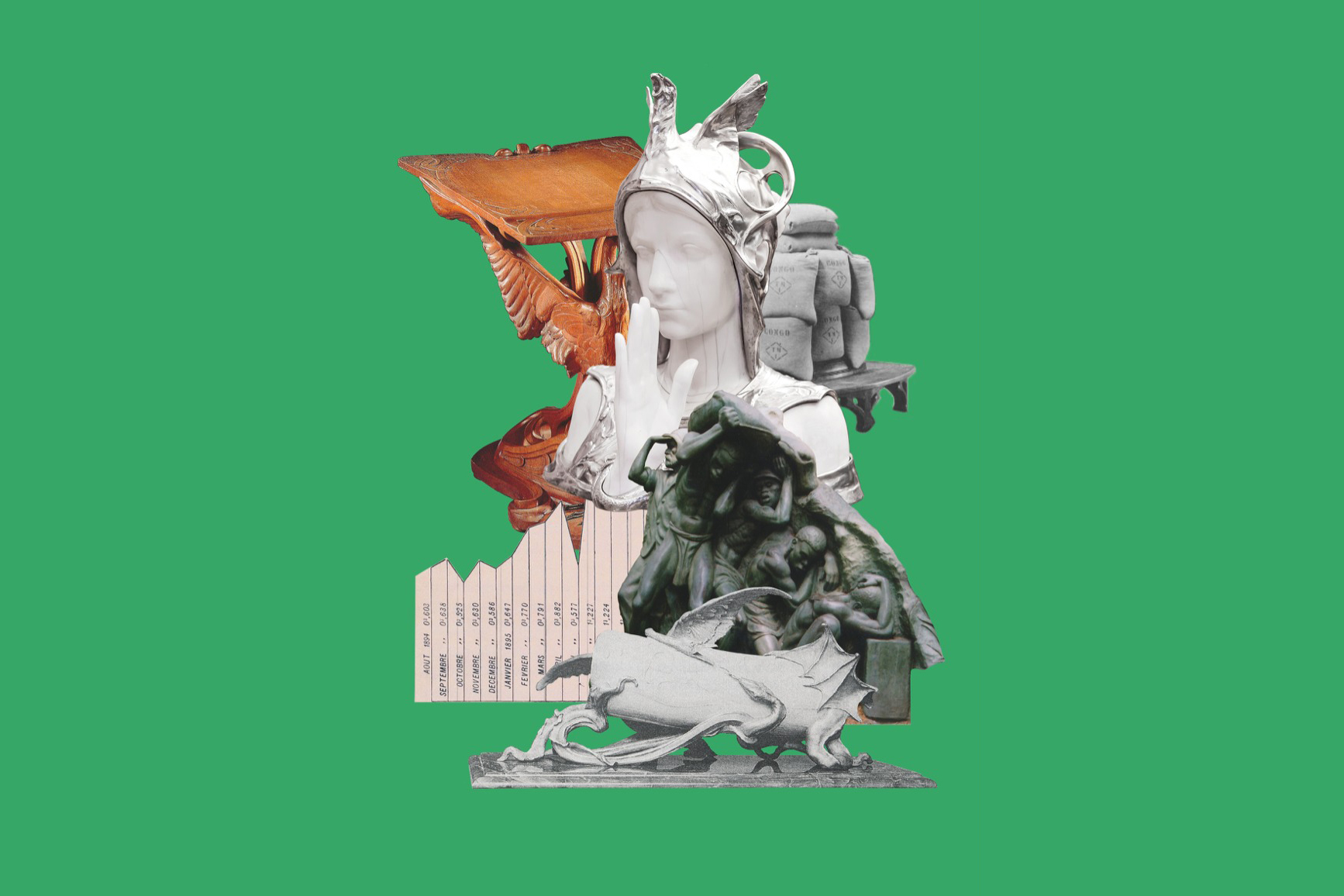It’s been over a month since I went to Amsterdam to see Lydia Ourahmane’s “Survival in the afterlife” at de Appel, and I am still feeling the effects. On arrival, I felt a sense of having come to a place of safety after having been far from home for a long time. It was very, well, healing. The show’s starting point is the spiritual commune Ourahmane’s parents founded during the civil war in Algeria (1991–2002), so perhaps the feeling of peace that washed over me is no coincidence.
Ourahmane’s research-driven practice, which often involves sound and installation, explores questions of borders, migration, colonialism, and spirituality. The curved Aula at de Appel felt full-sail with the breath of more people than I’d been around in over a year. Shadows shifted over a vast raft of pattern-clashing mattresses that sprawled across the floor. The ambient incantation Notice the direction of fires (2021), composed by Ourahmane and collaborators Yawning Portal, was calming. Hie Tee, Lydia’s mother, sang soothingly over the speakers: “my peace, my peace, I give unto you.” I went to smoke, where Hie Tee talked to me about the importance of never turning away anyone who is in need and advised me not to smoke. These were good pieces of advice. I hope to take both someday.
In a basement cell filled with photographs and videos produced alongside the House of Hope Christian commune, in which Ourahmane grew up, the artist’s sister Sarah was correcting typos in her ring-bound dissertation, also titled Survival in the Afterlife. In the kitchen, I found Lydia perched on a stool stirring a cauldron that was far too big for the tiny camper stove it was balanced on. “We have to feed 150 people with these,” she said. I asked: “Is that enough?” “There is always enough,” Lydia answered.
– Sophia Al-Maria
Sophia Al-Maria: Lydia, you and I met in Delphi in the spring of 2019 at a Mophradat conference for Arab and African artists called Accomplices. About two days in I found out you were living in Algiers. And at the time I wanted to make a pilgrimage to the rock paintings at Tassili n’Ajjer. I passed you a note with a Bic pen drawing from the caves, and a wish...
Lydia Ourahmane: “Take me to Tassili” written backwards, in true Da Vinci code.
SAM: Yes—and you almost did. One thing I have learned about you is that you love a mission. I feel that a lot of your practice is integrated with chance encounters with people, and I’m curious about how the work springs from that. For example, can you share a little about the trek you took, which followed on from that note?
LO: It was September 2019, and I had become obsessed with Tassili’s Neolithic cave paintings ever since you passed me that note at the Oracle. Something about that week and that place made everything feel prophetic, and so I carried that note very seriously. I began digging. I went to the library at the École supérieure des beaux-arts in Algiers, where I’d heard that an old professor used to write papers on the ancient cave paintings. While I was reading late one night, a friend sent me an unreleased album titled cave paintings, which felt like another sign.
I was eventually put in touch with Yasmine, a dear friend of a dear friend, who had just returned from a year’s hiatus travelling in South Asia. She came to my apartment late one afternoon, she had had trouble parking, it was a Friday, and the streets were filled with police. I made Genmaicha and a spread of fruits and energy biscuits. Yasmine told me about her own mission to Tassili n’Ajjer two years before with a group of anthropologists and researchers. Half an hour into her explanation, I was hooked. I began writing a film in my head. I use this trope to mentally prepare for any sort of creative immersion, even though a film has never been made, yet.
The trip I took a couple of months later became a recce, in my mind, for when you and I would eventually make that pilgrimage together. In the time that’s elapsed, the journey continues to write itself. We have wind that the trek will eventually happen in early 2022. The military have agreed to let us mount the plateau—the borderline between Algeria and Libya—but they may be coming with us.
SAM: I’ll only come if the chain of command ends with you—I’m terrified of military hierarchy. In fact, I associate your work with being horizontal. In 2018, you presented your first solo exhibition, “The you in us,” at London’s Chisenhale Gallery. It involved the entire floor becoming a raised and embedded speaker, on which the audience was encouraged to lie down. What’s your relationship to music?
LO: It is the purest form of communication. I struggle with language, even though I’ve learned how to articulate my thoughts in a way that is maybe comprehensible. Speaking multiple languages can be a source of great freedom. It allows your thoughts to move in a more lateral way. I grew up mixing three languages and have since picked up a couple more, which can feel super chaotic, like constantly looking for a suitable tongue. But there’s no chaos in music. I find solace in a way of thinking which is not rooted in concrete fluency.
SAM: Is there a horizon in music?
LO: More like a horizontal vertigo, the feeling that you could go on without mark or measure. It’s this ultimate surrender which I seek in music, which makes me a very gracious fan. What was so beautiful about working on the sound piece with Yawning Portal was the way that we developed the piece together in Barcelona. We started with some fragments they had put together, and I immediately had the feeling we could build a world together. Any collaboration is an experiment with foresight. And it turns out that a week staring square into a Logic interface can make you forget that clouds actually move.
We back-and-forthed between three time zones for the next weeks, but ultimately I trusted Joe Ware and Jess Walker’s ability to make time tenseless which made the piece as enveloping as it is. It was beautiful to watch that come into the room at de Appel, and for hundreds of people to walk in and feel willing to lie down in that together. After long pangs of physical separation, the gesture itself was very powerful. The piece created an intimate enclosure, a membrane, a kind of sac.
SAM: It was really special to witness and also be part of that collective lying down. I’ve never had an ecstatic religious experience myself, but it felt a bit like that.
LO: I think you can have a sort of “religious” experience by proxy. Ecstatic confluence is often aligned with those spaces. That’s something that I’ve always been very aware of growing up, immersed in a very active community and spiritual life. I was witnessing it, but I was also understanding and recognizing what it was that brought these people together without ever experiencing an epiphany myself.
Over the past few months, I began compiling the House of Hope Archives (1989–ongoing), which comprises unique photographic materials produced during the constitution of an active spiritual movement and Christian community located in the Diocese of Arzew (1988–91), House of Refuge L’Ayaida (1991–ongoing), St. Hubert (1995–96), and the House of Hope (1996–ongoing) in the Western region of Algeria. These materials, which gathered on my family’s shelves and in various dwellings over the years, were predominantly taken by my parents, and document their work and life in the various communities they established during Algeria’s civil war in the early nineties.
It was emotionally laborious to go through each photograph, and organize them into an archival format where they would be seen by others. The material remains sensitive. And I understood that the process of making an archive elevates the material and deems it worthy of recall. So, to take on the perspective of questioning the service of material as proof of existence brought a certain neutrality to a very private place. Which was quite heavy. But I also had to think about images as lacking an ethereal quality, which is a felt thing. Can an image describe a stream of elation in a room, for example? How much can we read by facial expressions, or volumes of bodies moving in tandem?
SAM: Your work In the Absence of our Mothers (2015–18) involved melting a gold chain into two gold teeth, one of which is implanted into your jaw. It’s a convergence of two escape narratives, that of your grandfather who pulled out all his teeth in order to escape military service while Algeria was under French rule and that of a young man whom you met in 2015 who sold you the chain, supposedly belonging to his mother, for the same price as a seat in a clandestine boat headed for Europe. Proxy is an interesting way to put it—the rubbing up against or encountering other people’s experiences. This feels embedded in a lot of your work.
LO: I think any kind of collective practice allows for that—dissolving into other people, or bringing them in, or meeting people where they are. It’s similar to how I like to listen to music on repeat, until I can get as close as possible to the feeling of the world that song was made in and everything I do is colored by it. Rubbing is interesting because people, their histories and experiences, can integrally change you.
SAM: These epiphanic moments that you were witnessing and which you experienced—how did they manifest?
LO: I witnessed many gatherings where this rising was very palpable. Usually, they began with a lot of music and singing: the collective voice coming together, saying the same thing, singing the same melodies. Then rips would start to appear, an elation when something would be activated—then it perforates the entire room. I think the conditions that allowed for this kind of community to exist arose from the need to survive what was happening outside. The country was traumatized by an ongoing civil war, and many people were looking for another way, which happened to involve a very radical dissociation from the way in which the majority thinks—to believe in something else. So, naturally, this environment becomes very empathetic. One person’s tears are everyone else’s.
SAM: I took a death doula course last year. I was very conscious of why I wept, and when, because there was a lot of weeping. And I learned that part of the death doula’s role is to hold space in which others can cry, but not cry with them. That confused me, because it is such a human urge to empathize and feel what others experience. But you have to hold boundaries in order to not encroach on others’ experiences, too. You have to clear space. The space you created at de Appel felt that way.
LO: Yes. I’ve never experienced an opening like the one that we had in Amsterdam. It was such a joy to work with the whole team at de Appel—it really felt like a wedding, as in a celebration of love. The ordeal of getting my mother over there from Algeria, so many of my closest friends showing up, you and I cooking purgatory beans for 150 people... it was all very surreal.
SAM: Your mother was telling me about how, in your household, if someone—anyone—turns up, you feed them, you let them have a place to sleep. No questions. Like that’s a mission in life. It was deeply inspiring to understand that openness in a time when we’re literally being forced into these paranoid bubbles of isolation. You were the first person who opened your home to me after a long period of very deep isolation and I wanted to thank you for that generosity of spirit.
LO: I don’t know any other way to be.
SAM: Visiting your show felt like a fitting end to a time that began with the closing of borders. One of which, for me, was Algeria and our delayed trip to Tassili n’Ajjer. Would you share more details from your reconnaissance mission to that place, and why you went?
LO: I very quickly realized how elusive this place was. Tassili n’Ajjer is a plateau situated on the now-border of Algeria and Libya containing thousands of prehistoric cave paintings and engravings dating back to 6,000 BC. It is, apparently, one of the few places on earth which has resisted military occupation due to the hostility of the landscape. The feeling is palpable—that you could completely disappear.
You lent me a book by Henri Lhote which documents a mission he conducted in the 1950s, with the aim of making one-to-one copies of hundreds of Neolithic cave paintings for an exhibition at the Musée des arts décoratifs in Paris. But in their attempt to record that space, they destroyed a lot of paintings. Afterwards, Ahmed, who was my guide (and who will also be our guide when we eventually make the trip) told me it was his uncle who led that trip with Lhote. They were up there for 16 months. After a certain point, his uncle was so tired that he just told the Europeans: “There are no more cave paintings. We’ve seen them all.” Which was a partial truth.
That withholding of information saved many paintings that could have also been destroyed, purely because of the techniques that they were using. They were scrubbing the walls, destroying the ecosystem that had protected these paintings for thousands of years. History is often dealt with as a violent excavation, uncovering the past by any means. We don’t hold space or allow it to speak for itself. It’s about claiming ownership of that discovery and not caring about the consequences, which I think is extremely...
SAM: Fucked up?
LO: Yes. Colonial? And I’m thinking a lot about how we translate spaces without extracting from them, more like mediums carrying information into the future, rather than trying to own it.
SAM: Speaking of translating spaces: your exhibition “Barzakh,” first shown at Kunsthalle Basel at the beginning of the year, encompassed the travelling of the entire contents of the flat you were living in during the early stages of the pandemic in Algiers. You placed bugging devices throughout the exhibition, but allowed visitors to go through all of your belongings. I saw my book lying on your desk, open and face-down, when I visited the second iteration of the work at Triangle-Astérides in Marseille. It felt uncanny.
LO: I moved to Algiers in 2018, and subsequently spent most of the pandemic alone in that apartment, pacing between the bed, the kitchen, the table, and back again. We had quite a strict curfew—1 p.m. for the first months—and regional lockdowns which prevented me from going to my parents’ in the mountains a couple of hours from Algiers. I started running at six in the morning, in very baggy clothes, sunglasses, and headphones, zipping away any potential for harassment at the beach. In the summer of 2020, I eventually left Algiers because of work commitments in Europe. I didn’t know when I would be able to go back. I thought it would be a couple of months at most.
During the seemingly never-ending limbo of the time that followed, I spent a lot of time reflecting on that reality for those who are forced to leave home and may never return. Whilst a lot of people were being confined to domestic spaces, a sense of loss had become superimposed onto the objects I had left behind. I think what was really going on was that I felt rather homeless. It wasn’t about the things that you surround yourself with, I realized, but rather a spatial orientation. Domestic environments are routines, formed by the way you’re choreographed in a space—whose denial fueled an intense, reflexive need for reunification. Realizing that home is also immaterial, I wondered if I had completely lost my mind in wanting to bring the contents of an apartment out of Algiers—what the implications would be at a time when bodies were not only denied mobility, but further confined, and why objects negated this political incentive.
The months that followed bled into one another, during which I made a work which encompassed borrowing and moving the entire contents of my furnished, rented apartment in Algiers to Kunsthalle Basel, and then on to Triangle-Astérides in Marseille. This endeavor took on the title “Barzakh,” which means limbo, a state of being in-between, not purgatory but rather a resting point, the land between two seas.
SAM: What happens to that space next?
LO: I recently found out that it will travel to Ghent, which means the process of return is even further delayed. We renegotiated with my landlady and with customs for another year. It won’t go back until September 2022, almost exactly two years after I left. It’s a long time. Sometimes, when I’m moving around for so long, there’s an anxiety about returning. I end up apologizing a lot. Minutes or weeks or months feel no different, but then the soul delay is real. Another potent mood. Desire trying to catch up with the body that left it.
SAM: Yes. For the first time in my life, I identify as a part of a diaspora. The anxiety of return mounts.
LO: I had a conversation with Celine Kopp about “the impossibility of return.” We were speaking about how these objects will never be able to return to how they were before because they have moved. They have been touched and handled by so many different people. Things were taken, added. I think of diaspora as a retention that’s somehow recognizable, be it in the body or in the space around it. That somehow the air around its subject is different. It’s been rubbing elsewhere. And I think about what it is going to mean after two years of the apartment going to various places. How are the objects going to return? I’ll go back and it’ll be the last time I install the apartment. But I don’t know how that’s going to feel. For now its cavity lies in wait… ellipses. I’m asking myself: “What have I done?!” But maybe it will be a joyous homecoming. I’ll cook vegetables and invite my friends over and we’ll dance around, blowing plumes of smoke over the city, toward its ambient hue, spilling secrets into dawn.
SAM: It is a huge relief to hear that another artist feels sometimes: “What have I done?!”
LO: The sun always rises on the other side. But I’m trying to wrap my arms around both.
SAM: I’m going to call you Lydia “the spacemaker” Ourahmane from now on.
“Survival in the Afterlife” is a project initiated by Mophradat's Consortium Commissions. The exhibition runs at De Appel, Amsterdam to November 23 before traveling to Portikus, Frankfurt, where it opens on December 3.
